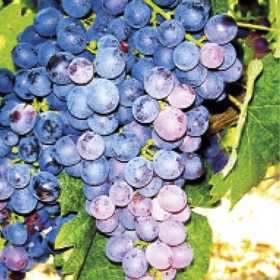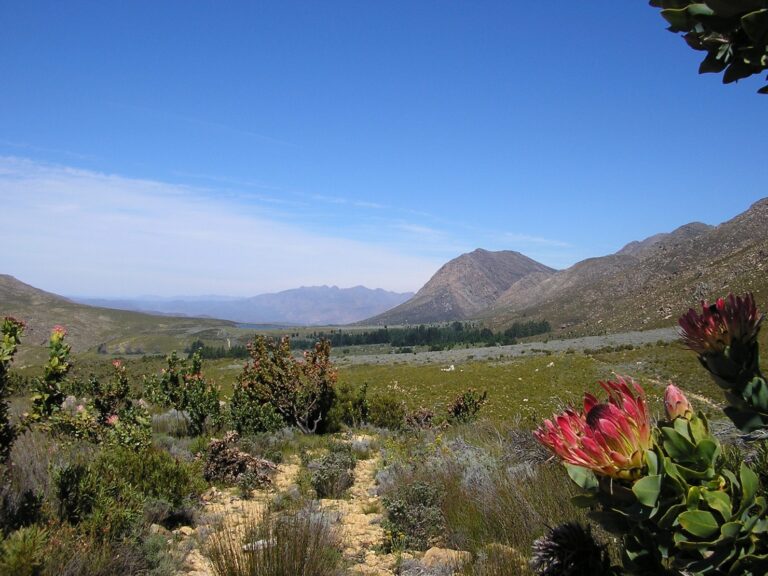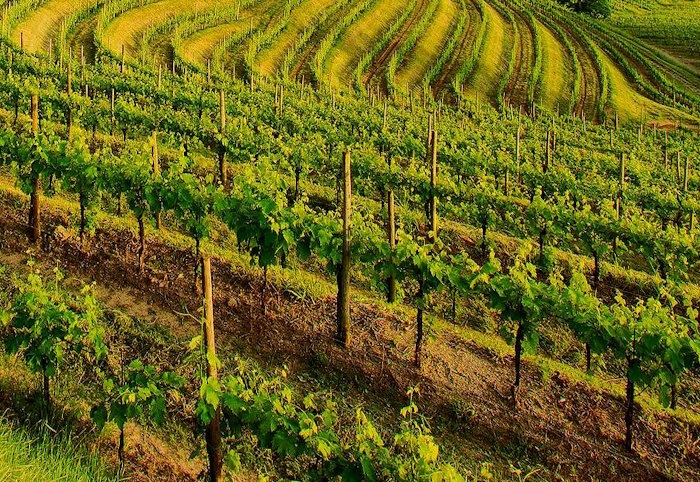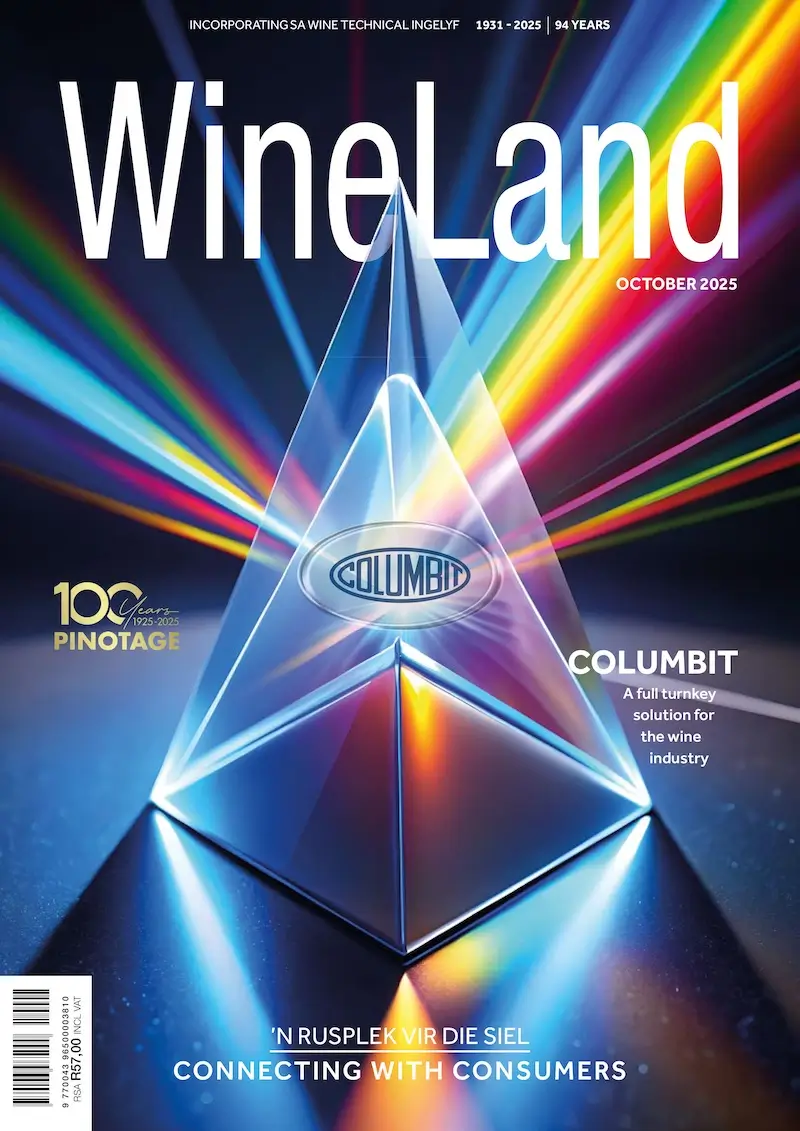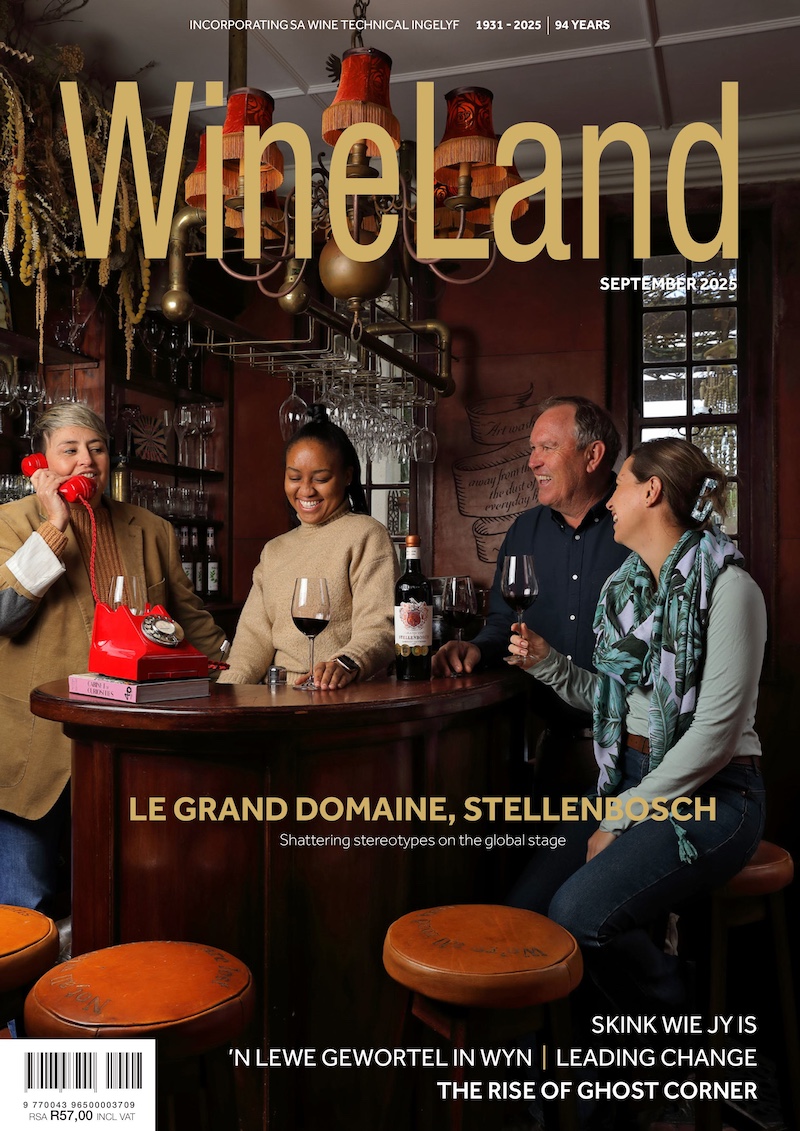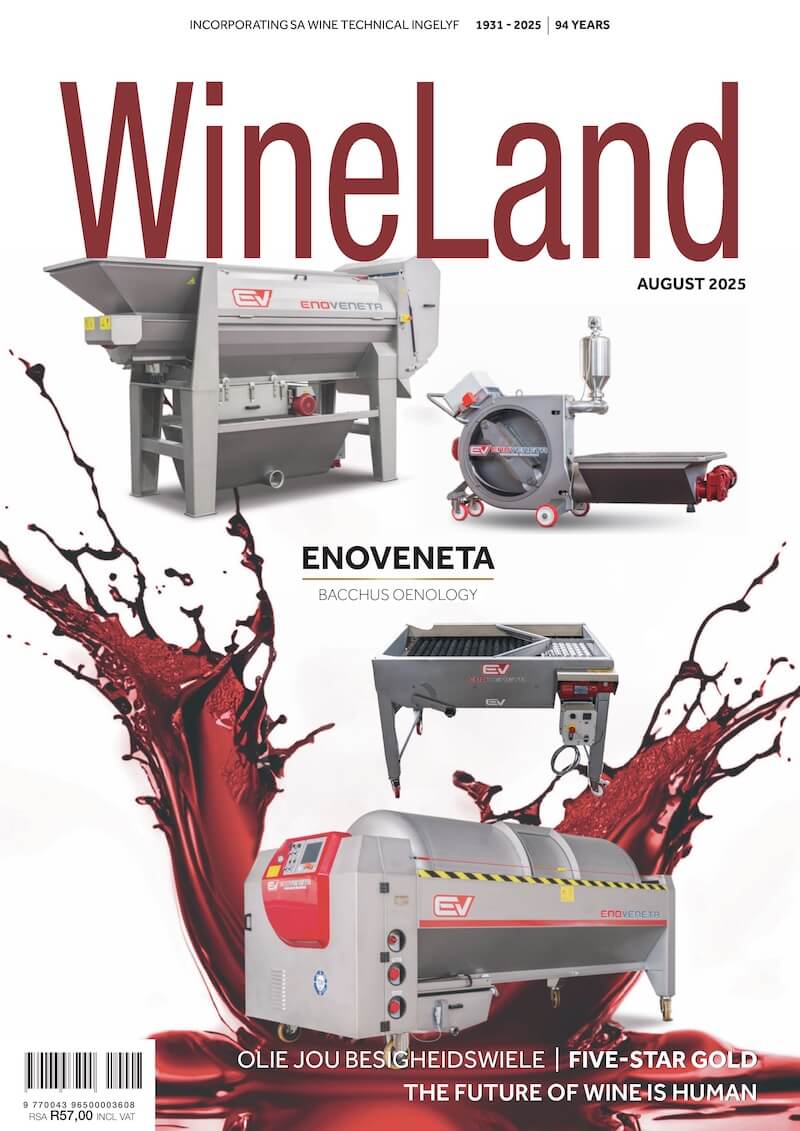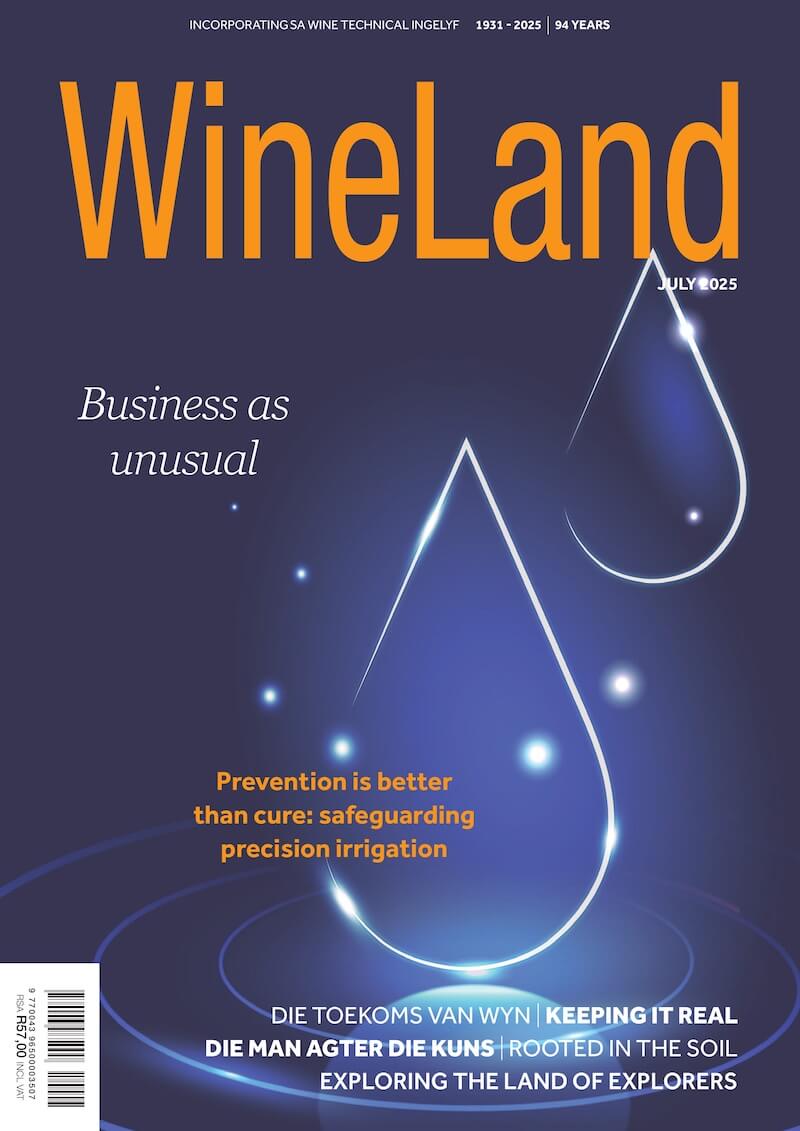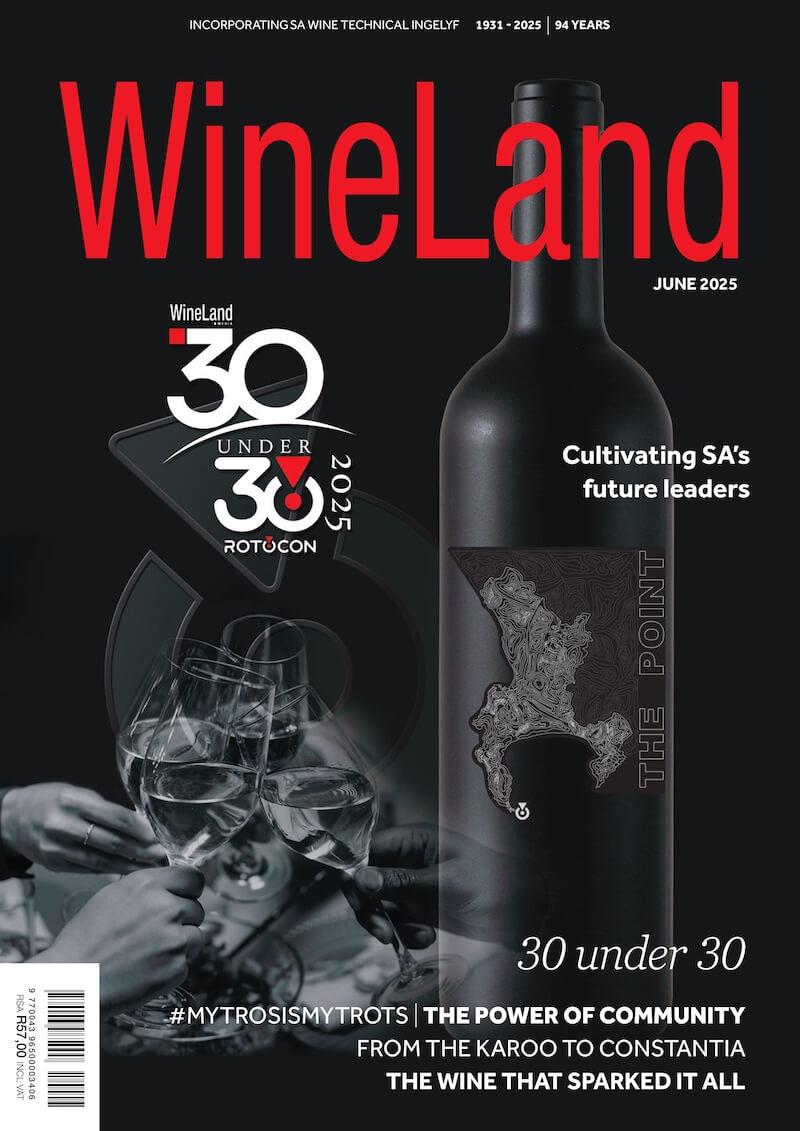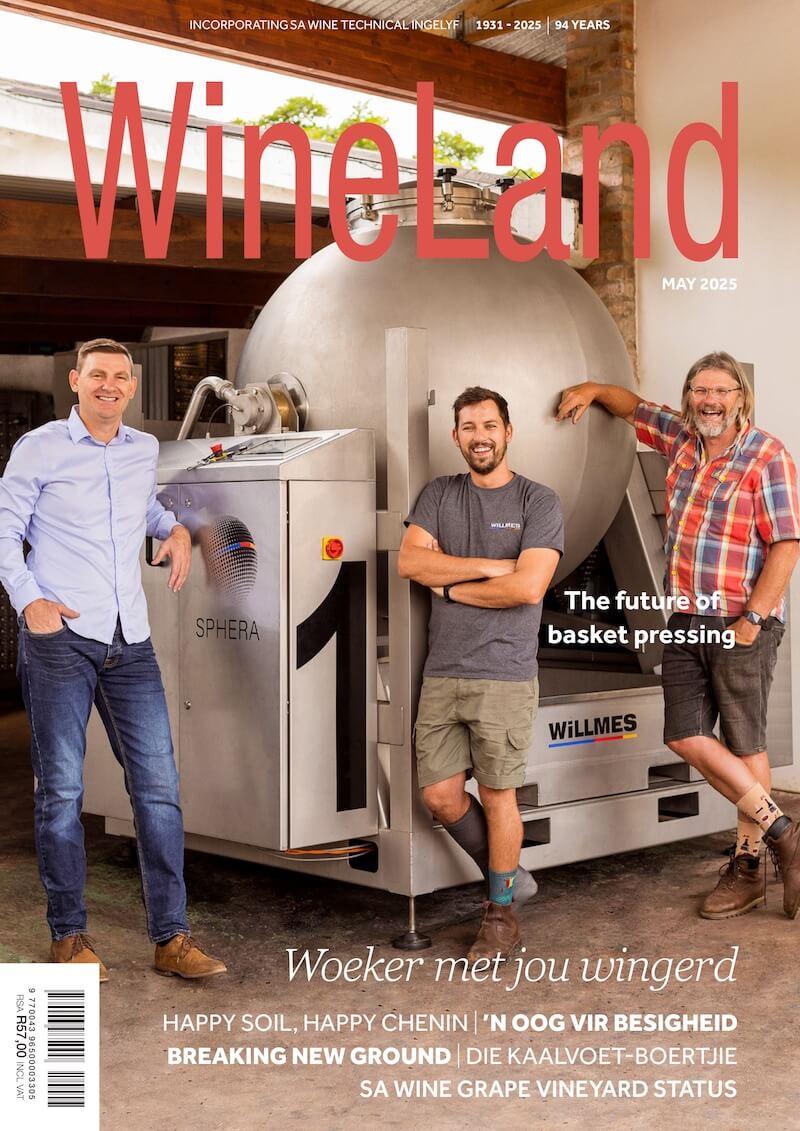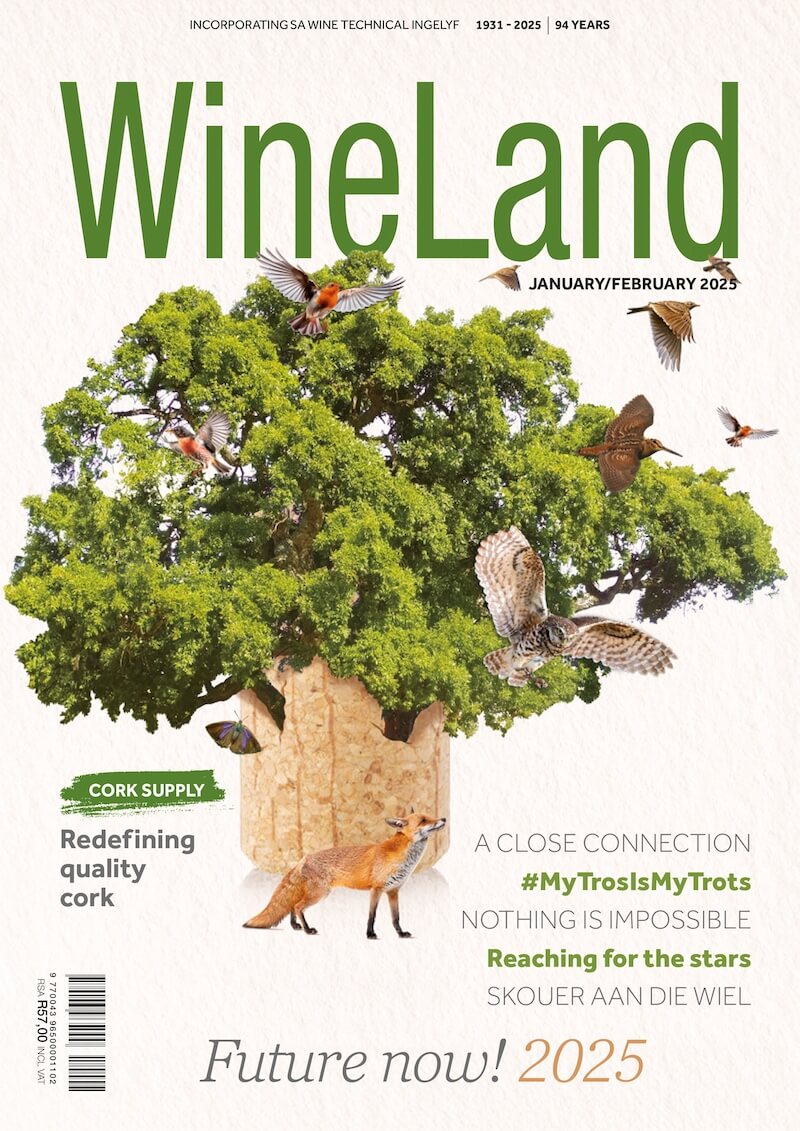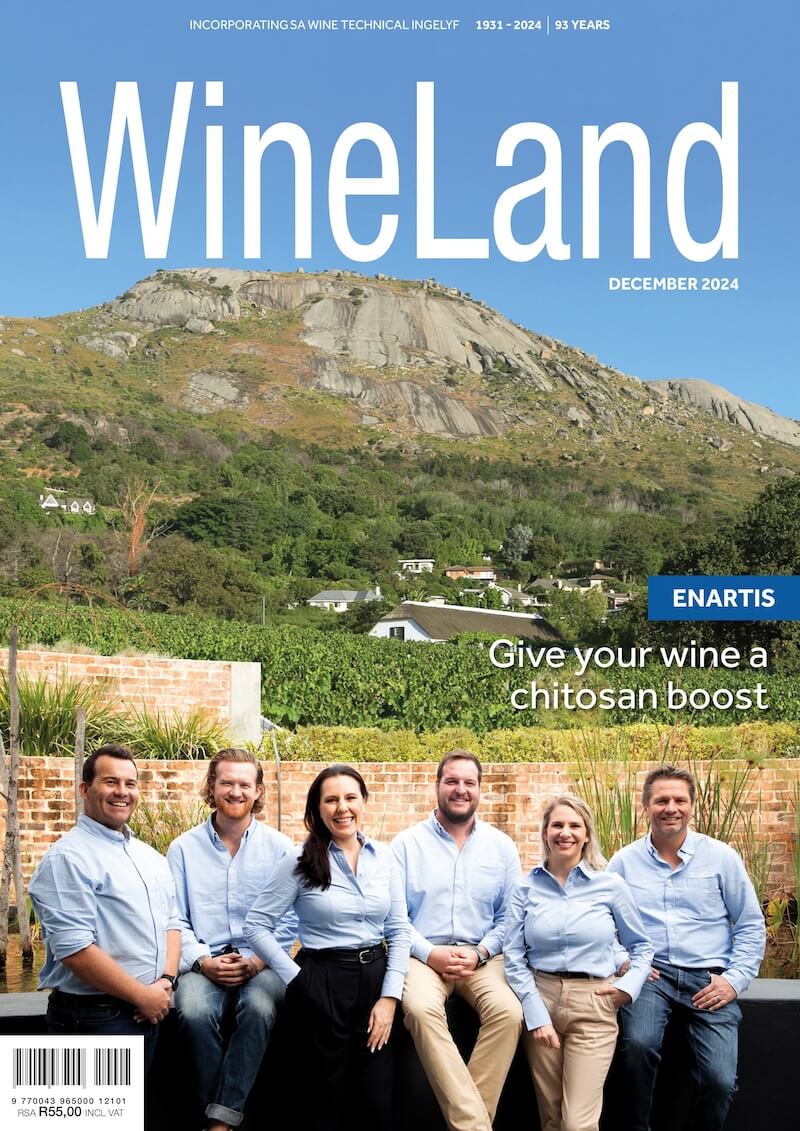The objective of this article is to introduce information about cultivars that could be promising and is a supplement to an article in Wynboer (Van Schalkwyk & Schmidt, 2004). The cultivars in this report are not registered for either cultivation or vinification in South Africa in the official varietal list compiled by the Department of Agriculture, Forestry and Fisheries (2014). The cultivars are grafted on Richter 99 rootstocks and trellised on a five strand extended Perold system with adjustable foliage wires and the plant width is 1.5 m x 3.0 m. Standard pruning and canopy management practices were applied. An effort was made to harvest the red wine cultivars at 24.5°B to 25.0°B. At the time of the crush 50 mg/kg SO2 was added to the grapes, which were then pressed. A must sample was taken for pH, titratable acid and sugar analyses. After one hour’s skin contact the crushed grapes were inoculated with pure dehydrated VIN13 at a concentration of 30 g/hℓ. An adjustment of 50 g/hℓ diammoniumphosphate (DAP) was also made. Fermentation on the skins took place at 25°C and the must cap was punched down three times a day. The wine was not aged in wood. The wine was fermented dry, whereafter it was bottled and evaluated for aroma and overall wine quality by a trained tasting panel six months after bottling.
Alvarelhão
Alvarelhão is a high quality red wine cultivar originating from the north of Portugal and cultivated intensively for high quality wine in the Monҫão subregion (www.wine-searcher.com), but it is generally not suitable as a cultivar wine. In Portugal it is mostly used in a blend with Touriga Naҫional as a dry red wine and in port and in the Dão province as a blend in red wines. The cultivar has several synonyms, namely Alvarelhao, Alvarelho, Alvarello, Alvarello Gallego, Alvarelo, Alvarelyo, Avarilhao, Brancelho, Brancellao, Brancello, Brencellao, Broncellao, Locaia, Pilongo, Pirruivo, Serradelo, Serradillo, Uva, Gallega, Uva Negra, Varancelha and Verancelha. Alvarelhão has medium large, loose to well-filled bunches. Yields obtained were similar to those of Pinotage under the given conditions. Alvarelhão does not have an intense skin colour and good colour extraction was not obtained during vinification, the result being light ruby red wines. This concurs with overseas findings. The experimental wines had a mildly intense berry/tree fruit aroma.
Cabernet Cubin
Cabernet Cubin (We 70-281-35) is a red wine cultivar that was cultivated at the Staatliche Lehr- und Versuchsanstalt für Wein- und Obstbau in Weinsberg in Germany in 1970. It is a cross between Blauer Limberger (Blaufrankisch) and Cabernet Sauvignon (Levadoux clone). According to the literature it is a cultivar that ripens late, produces high yields and is drought resistant (www.wein-plus.eu). Cabernet Cubin also has good resistance to most fungal diseases and is moreover cold resistant, which makes it suitable for cultivation in cold regions where snow is a factor.
Cabernet Cubin was imported by ARC Infruitec-Nietvoorbij in 2007 and after its release from quarantine, it was grafted onto Richter 99 from the grapevine gene pool at Nietvoorbij. An evaluation site was established under contract at Ernita once the plant material had undergone virus cleansing. The desired ripeness was achieved at Nietvoorbij from mid-February to mid-March, earlier than Cabernet Sauvignon and with higher yields (no production data was collected at Ernita). Results show that the cultivar adapts well to warm areas. The bunches are medium-sized and bunch compactness ranges from loose to well-filled. A degree of millerandage occurs at times. Experimental wines were made separately from the two different sites by the respective bodies and evaluated organoleptically at Nietvoorbij by an experimental wine judging panel. Experimental wines had an intense deep red colour, with reasonable tannins and a prominent berry character. The wine made from Cabernet Cubin is very similar to Cabernet Sauvignon, for which it is a possible replacement, because it ripens slightly earlier and also produces higher yields. It should be borne in mind, nevertheless, that cultivation rights on the cultivar have been registered and that royalties will have to be paid if grapevines are planted.
Rondo
Rondo (Geisenheim 6494-5) is a German cross (Zarya Servera x Saint Laurent) bred by Prof V Kraus from the then Czechoslovakia in 1964 (www.winegrowers.info). The cultivar was further developed by Dr Helmut Becker of the Geisenheim Grape Breeding Institute. Rondo is an early cultivar and resistant to winter frost and as a result of one parent being Vitis amurensis, it is also resistant to downy mildew. Due to the cultivar’s early ripening, it is subject to feeding damage by birds. In wet seasons the cultivar tends to get botrytis rot and it must also be sprayed against oidium. In the Stellenbosch area yields are slightly higher than that of Cabernet Sauvignon. The grapes are very dark in colour and also have red juice. Good colour extraction is achieved during vinification and therefore Rondo is blended with other red wine cultivars that struggle to obtain colour. Rondo produces full-bodied, balanced wines with an intense dark red colour and a prominent blackcurrant/spicy character with tree fruit/vegetative and nutty nuances. The cultivar performs especially well in cooler areas and is suitable for the vinification of cultivar wines.
Summary
Alvarelhão, Cabernet Cubin and Rondo could make a contribution to the existing South African red wine cultivation, to a lesser or greater extent. However, in order to evaluate them properly, these cultivars should be planted on a semi-commercial basis in different climatic regions. It should be noted, nevertheless, that cultivation rights have been registered on Cabernet Cubin and Rondo and any planting may only take place under contract with the applicable nursery body.
In Part 2 we look at other lesser known red and white cultivars that could possibly make a contribution to the enhancement of the South African wine spectrum.
Acknowledgements
Thanks to Estelle Rhode of the Viticulture department and Nietvoorbij Experimental Farm staff of ARC Infruitec-Nietvoorbij for their technical assistance. We would also like to thank the Department of Science and Technology (DST), Winetech and ARC Infruitec-Nietvoorbij for financial support of this project.
References
Cabernet Cubin. www.wine-plus.eu.
Grape varieties. Alvarelhão wines. www.wine-searcher.com.
Sawis, 2014. South African Wine Industry Statistics 38: 12.
Van Schalkwyk, D. & Schmidt, A., 2004. Performance of certain lesser known European wine grape cultivars under South African conditions. Wynboer 174: 14 – 17, www.wineland.co.za.
South African varietal list as maintained by the Registrar of Plant Improvement. Fruit crops, November 2014. Department of Agriculture, Forestry & Fisheries.
Van Schalkwyk, D., 2010. South African grapevine genebank at ARC Infruitec-Nietvoorbij. Wynboer 253, 102 – 103, www.wineland.co.za.
Van Schalkwyk, D., 2013. Genebank is ‘biblioteek’ van SA druiwe. Landbouweekblad, 5 April, 79 – 80.
Winegrowers supplies – Vine varieties information. Rondo. www.winegrowers.info.
– For more information, contact Danie van Schalkwyk at vschalkwykd@arc.agric.za.
